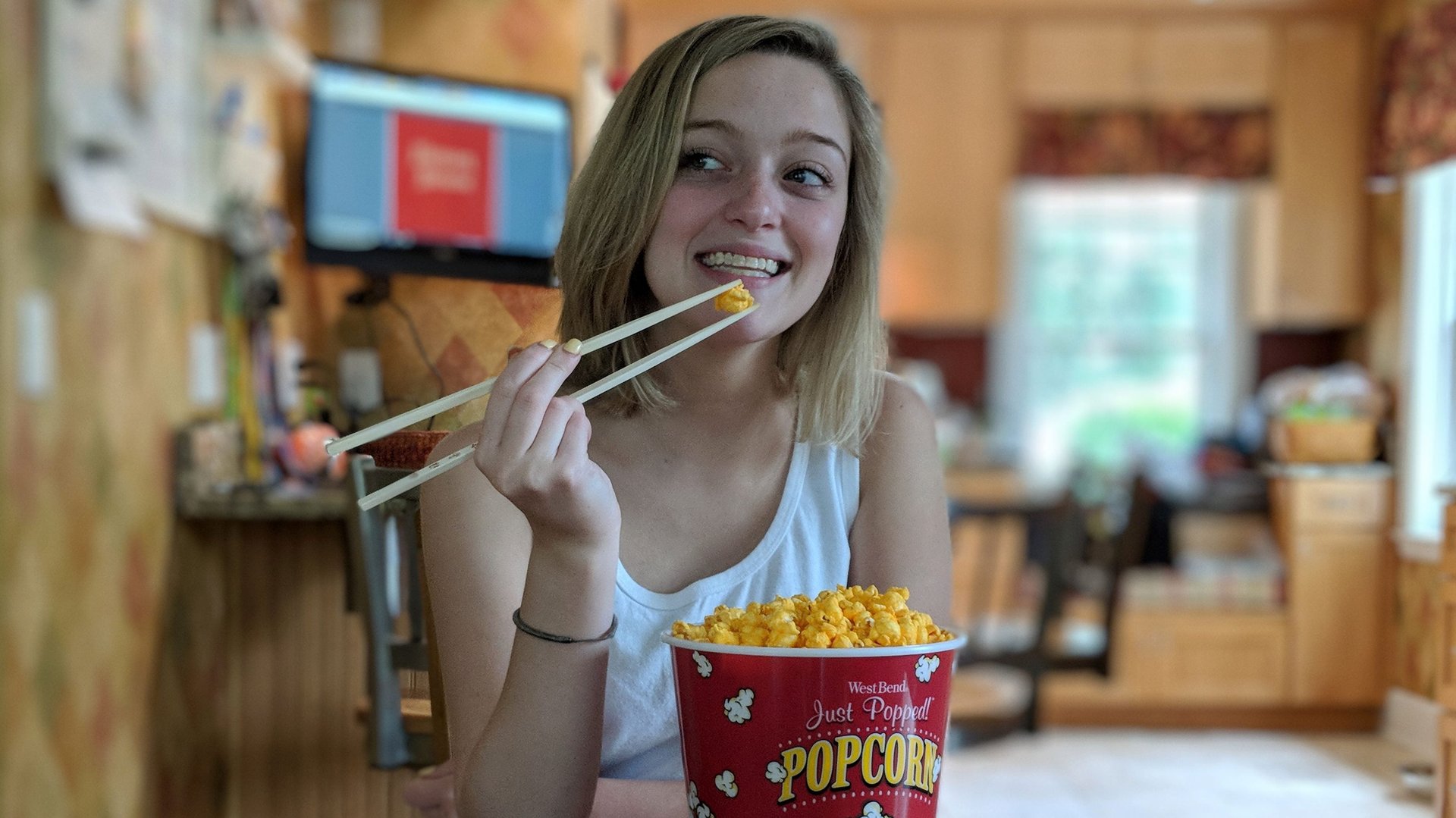A ridiculous new study makes a case for eating popcorn with chopsticks
The transatlantic alliance might be fracturing, much of Puerto Rico is still without electricity, and the Rohingya continue to be the target of unspeakable human-rights abuse—but rest assured, the business school at Ohio State University has been hard at work figuring out that people just might get more joy out of life if they ate popcorn with a pair of chopsticks.


The transatlantic alliance might be fracturing, much of Puerto Rico is still without electricity, and the Rohingya continue to be the target of unspeakable human-rights abuse—but rest assured, the business school at Ohio State University has been hard at work figuring out that people just might get more joy out of life if they ate popcorn with a pair of chopsticks.
The work was published recently in the journal Personality and Social Psychology Bulletin, and it goes beyond popcorn.
“For example, when you’re eating pizza, after eating one slice normally, you could try eating one slice with a knife and fork and then folding the next slice,” university researchers said in a press release. “And if you’re sick of your sofa, try putting it in another room rather than getting rid of it.”
They learned this after conducting a series of experiments, the first of which involved inviting 68 people into a laboratory on the premise they were there for research into helping people eat more slowly. All of them were seated before 10 kernels of popcorn. Half were told to eat them one at a time with their hands, the other half were given chopsticks. After they’d finished, the subjects were asked a variety of questions about how much they enjoyed the popcorn, how flavorful it was, and whether it was fun to eat.
It was determined the people who used chopsticks enjoyed their overall experience more. They were more focused on the food, they said, which helped intensify the taste and boost the joie de vivre they felt while snacking.
Another experiment recruited 300 people online to have them rate the experience of drinking water in novel ways: out of martini glasses, shipping envelopes, and by lapping it up out of a bowl like a dog or cat. Again, people had more fun when they consumed water in unconventional ways.
At the crux of the work is the perceived problem of satiation. It’s pretty simple, and food just happens to make for a good example. Eating a first slice of sausage pizza might be a blissful experience, but after having a second, third, or even fourth slice, the joy felt with each bite is likely to diminish.
Many companies seek to solve this phenomenon by creating new products, or reformulating or repackaging old ones. But assistant professor Robert Smith argues such a practice can be wasteful, and, for individuals, cost-prohibitive. You might grow bored with a new car, he explains, but not everyone can afford to just buy a new one. This is where the chopsticks come in.
“Something can feel new, which will cause you to immerse in it, which will cause you to enjoy it more if you consume it in an unconventional way,” Smith said.
But not everyone has the same idea of what makes for unconventional behavior. Of his study, Smith says that “chopsticks boost enjoyment because they provide an unusual first-time experience, not because they are a better way to eat popcorn.” The chopsticks are poignant because, for huge portions of the world population, they are not the least bit unconventional, making this experiment a reminder of how easily attempts at novelty can tread into cultural appropriation.
In 2016, the food and travel magazine Saveur faced criticism after it invited two white men to write and photograph a piece on Filipino chef Dale Talde. The article featured an image of two dishes styled on top of a mahjong table, which made no sense. What could have been the motivation behind featuring traditional Filipino food alongside a Chinese game?
As food photographer Celeste Noche told Quartz last year, it boils down to how easily Westerners tend to lapse into accessorizing non-Western foods as though they are exotic. This is particularly pervasive on social media platforms such as Instagram, where it’s common to find people dressing up their food photography with cultural accoutrements to enhance the aesthetic without considering the cultural sensitivities involved. Sure, eating popcorn with chopsticks might be a source of temporary amusement for people, but imagine what it would say about how we think about other cultures if there were a restaurant that was all about using chopsticks in “novel” ways?